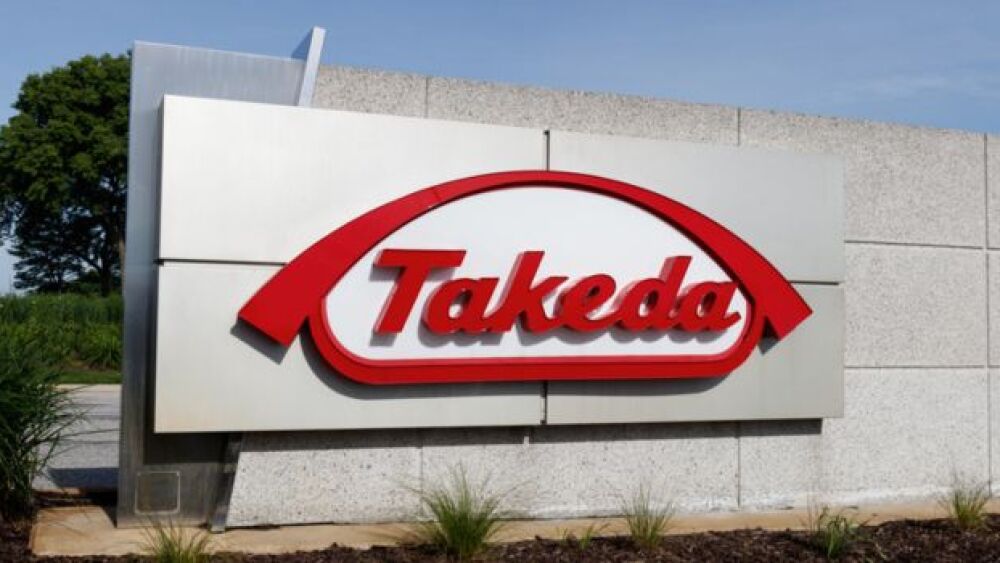Speaking to BioSpace in San Francisco, Elena Koundourakis, the head of the orexin franchise at Takeda Pharmaceuticals, gave a preview of what is ahead for its aims to treat narcolepsy.
Pictured: Red and white Takeda sign on a brick wall/iStock, jetcityimage
Takeda’s work in its orexin franchise may soon reach a new high point as the oral candidate TAK-861 will have a Phase II narcolepsy readout before the end of its 2023 fiscal year, which ends March 31, 2024. Back in 2021, the Japanese pharma put the kibosh on another orexin candidate, TAK-994, due to issues around safety.
But with a readout expected soon, Elena Koundourakis, who has led Takeda’s orexin program for more than three years, spoke to BioSpace in San Francisco to talk about what’s to come for its orexin program.
This interview has been edited for brevity.
BSp: What has been your involvement in Takeda’s orexin program?
EK: I’ve been with the company a long time, but I came to orexin after various roles in oncology, GI, and vaccines because I saw the promise of the biology. I knew at the time that orexin was being developed by Takeda since 2017 [as an] IV for narcolepsy, type one and type two. Still, I knew that orexin had been implicated in sleep-wake from a biological perspective, regulation of sleep-wake, respiration, metabolism.
BSp: What is the previous history of this drug?
EK: It has the potential to serve [an] unmet need in several indications, so that attracted me. . . . We had experience in the sleep field with ramelteon [Rozerem], which was launched in Japan and the U.S. [It] didn’t do extremely well, but it helped us from a chemistry perspective to make the target druggable in terms of having a selective orexin 2 agonist that can penetrate the blood-brain barrier and then modulate the receptor, which is intact in patients with narcolepsy type 1. The peptide is lost . . . but the receptors are intact. So the idea is that you can modulate the receptor, then influence the signaling downstream of the receptor and restore, if you like, the physiological function of patients in narcolepsy. The cardinal symptom is excessive daytime sleepiness, so they often fall asleep throughout the day.
BSp: What went wrong with the other orexin program, and how is Takeda aiming to bounce back?
EK: We bounced back big time. Because it was the first time we were going from an IV to an oral [drug], we had a lot of question marks. When you try to improve the pathophysiology of a narcoleptic patient who in the morning is somewhat sleepy but not really sleepy, and then in the afternoon is sleepy, and then it gets better later in the afternoon. Still, then they are having disrupted nighttime sleep. It is an oral compound, which you dose maybe once a day or two times a day—it’s hard, right? We weren’t sure if, with the oral TAK-994 at that time, [we could] address all the symptoms. . . . So we have had a very active backup programs. [After toxicity issues ended the program] everybody working on 994 started working on TAK-861.
BSp: Even though 994 didn’t progress, results were still posted in the New England Journal of Medicine. What were the most surprising results?
EK: The most surprising result that we found was how well it worked. It was like a complete normalization of wakefulness; they wouldn’t fall asleep. Their wakefulness would be like yours and mine—maybe not during J.P. Morgan. Then there’s the complete suppression of cataplexy, like zero cataplectic attacks, which was incredible. . . . So it’s a functional cure, basically.
Tyler Patchen is a staff writer at BioSpace. You can reach him at tyler.patchen@biospace.com. Follow him on LinkedIn.






